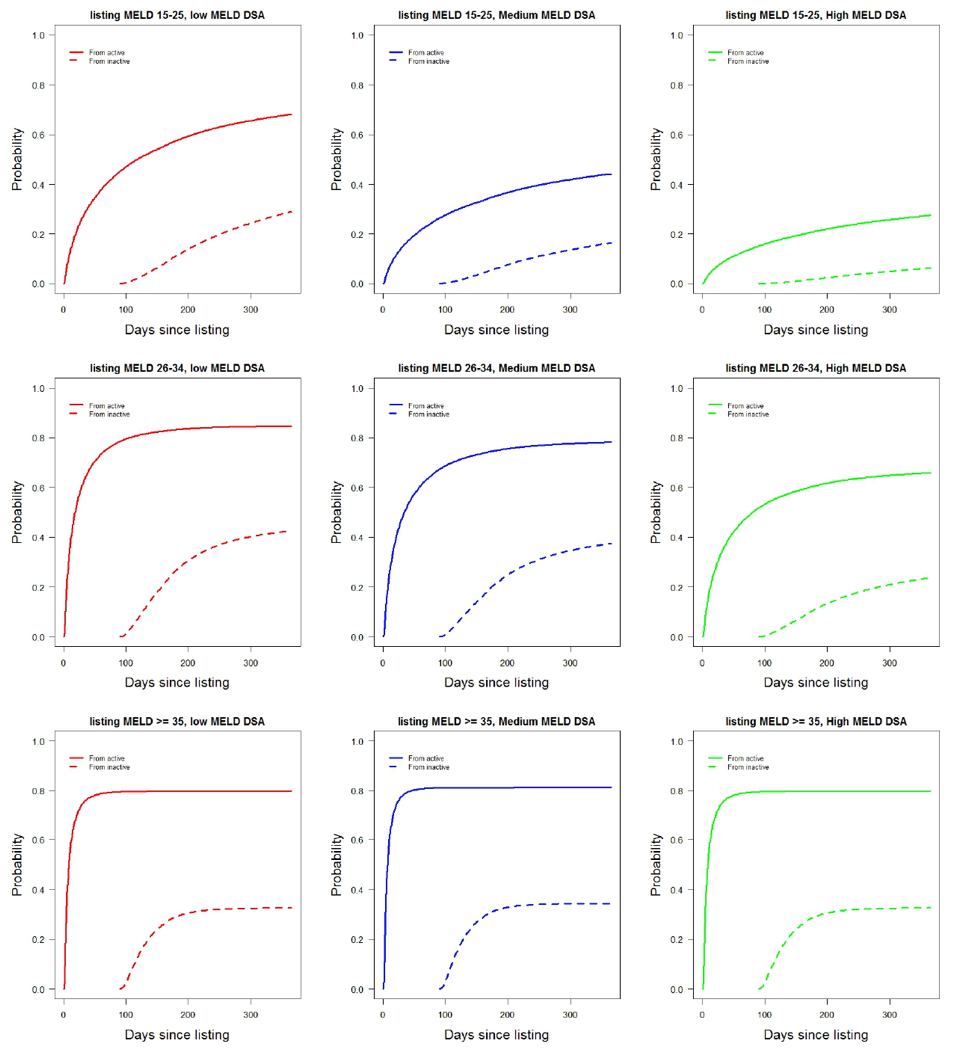Inactive Status Changes Disproportionately Impacts the Probability of Obtaining a Deceased Donor Liver Transplant in Donation Service Areas with Higher MMaT
1Yale, New Haven, CT, 2UNOS, Richmond, VA
Meeting: 2020 American Transplant Congress
Abstract number: 577
Keywords: Cadaveric organs, Liver transplantation, Waiting lists
Session Information
Session Name: Liver: MELD, Allocation and Donor Issues (DCD/ECD) II
Session Type: Oral Abstract Session
Date: Saturday, May 30, 2020
Session Time: 3:15pm-4:45pm
 Presentation Time: 3:39pm-3:51pm
Presentation Time: 3:39pm-3:51pm
Location: Virtual
*Purpose: Liver transplant (LT) rate is typically calculated by including both active and inactive patients, despite the fact that inactive patients are unable to receive organ offers. Currently the impact of inactive status change on the chances of getting a transplant is unknown. There also may be differences in how inactive patients are managed between Donation Service Areas (DSAs) which could provide new insights into observed geographic disparities in median MELD at transplant (MMaT).
*Methods: We constructed a semi-parametric, case-mix adjusted, multistate model using the OPTN database (06/18/2013 to 06/08/2018) to calculate the probability of the following competing events for LT candidates: deceased donor transplant, living donor transplant, death, or other/well. Status 1 and MELD exception patients were excluded. We grouped DSAs by their MMaT and separated them into tertiles (low, medium, high MMaT). Following an active listing, we measured the probability of deceased donor transplant with or without an inactive status change 90 days from listing.
*Results: There were 25,216 adult waitlisted patients, of which 98.5% were listed as active. The most common reason for an inactive status change was temporarily too sick, which was used most often in the low MMaT DSA category (low MMaT (61.7%); medium MMaT (57.2%); high MMaT (52.3%)). Other common reasons, incomplete work-up (mean 11.1%) and insurance issues (11.2%) were not appreciably different across DSA tertiles. For patients with MELD scores > 35, there were no observed differences in transplant probability for active patients, or for those who experienced an inactive status change, regardless of a DSAs MMaT (figure (__) active; (—) inactive). An inactive status change within 90 days from an active listing dramatically reduced the probability of transplant across all patient MELD groups and MMaT tertiles, but disproportionately affected patients in the highest MMaT tertile in MELD categories of 15-25 and MELD 26-34.
*Conclusions: Using multistate modeling, we are now able to quantify the impact of an inactive status change on the future probability of obtaining a deceased donor LT. The impact of an inactive status change differs between a DSAs MMaT and MELD categories with the exception of the highest MELD patients (MELD > 35).
To cite this abstract in AMA style:
Haakinson D, Noreen S, Stewart D, Batra R, Gan G, Deng Y, Kulkarni S. Inactive Status Changes Disproportionately Impacts the Probability of Obtaining a Deceased Donor Liver Transplant in Donation Service Areas with Higher MMaT [abstract]. Am J Transplant. 2020; 20 (suppl 3). https://atcmeetingabstracts.com/abstract/inactive-status-changes-disproportionately-impacts-the-probability-of-obtaining-a-deceased-donor-liver-transplant-in-donation-service-areas-with-higher-mmat/. Accessed November 22, 2025.« Back to 2020 American Transplant Congress

